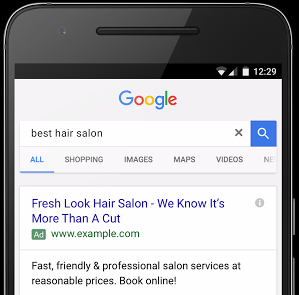In the world of marketing, two terms that are thrown about more than The Bachelor contestants’ emotions are that of SEO and SEM.
These two do go hand in hand and when used correctly, can have a symbiotic relationship… However, so many people are confused about the best way to approach these strategies.
How do I know what is right for me? Will SEO or SEM be the strategy of my dreams?
You’re not the only one asking this question. We’re here to clear it up.
Let us help you find that perfect match…


True love takes time and commitment...
SEO (Search Engine Optimisation) is the process of optimising content to be discovered by a search engine’s organic search results.
It’s kind of like going on a date and pretending that your hairstyle was totally undone, that ‘just got out of bed’ look (yet you spent multiple hours using a vast array of products to get the perfect combination of this ‘oh so effortless’ mess).
Ways to optimise your webpage can include improving its loading speed, enhancing the content, working with images, ensuring the page is optimised for mobile browsing, including relevant links and inputting keyword-rich, long-form content etc.
SEO is about optimising your website to demonstrate to search engines that your content is the best result for the topic at hand. When businesses rank higher on Google, they get more trust from visitors. A long-term SEO strategy is going to do a lot more than provide just leads; it’ll also improve a business’ reputation. It’s about putting in the time and reaping the rewards later.
S…and…M?
SEM, on the other hand, stands for Search Engine Marketing and refers to exclusively paid search. It is the process of purchasing ads on search engines which thereby increases website traffic.
You’ll be very familiar with these ads (with the most popular being Google Ads) and in fact, have probably come across thousands of them when searching for things such as ‘bars near me’ ‘best vacuum cleaners’, or ‘do Geminis get along with Capricorns’ (ok, maybe not that, but you get the gist).
These ads come in a variety of formats, with some being small, text-based ads and others more visual, product based ads.


Put a ring on it!
Before we take this marketing marriage to the next step, one must ‘win’ the ad auction to purchase SEM ads (much like winning the person of your dreams…)
The ad auction process takes place every single time someone enters a search query into Google. To be entered into this auction, advertisers identify keywords they want to bid on, and state how much they are willing to spend (per click) to have their ads appear alongside results relating to those keywords.
If Google determines that the keywords you have bid on are contained within a user’s search query, your ads are entered into the ad auction…and voila, you’ve found your match.
So you’re saying it’s not all about the money…?
One of the most enduring misconceptions about search engine marketing is that whomever has the largest advertising budget wins.
However, Google does not want to create a poor user experience and will prefer to return a more optimised and relevant result rather than dishing out the ad that has been given the highest budget.
Google and other search engines have one goal: to provide their users with the most accurate information or any topic they are interested in. Therefore, if your advert is less than helpful, it will not be shown, no matter how much money is thrown at it.

So what’s the best way to find a meaningful partnership?
True SEM cannot exist without the use of organic SEO, however there are situations where a strong, specific boost in SEM is particularly useful (for example when a site is first launched, or a seasonal sale is occurring and you need immediate visibility.)
Most people search online before buying anything, therefore having a strong presence in search is crucial and using a strategic combination of both can boost your visibility in the long term.
As SEO and SEM both heavily rely on keywords to drive traffic to business websites and web pages, you must have a strong understanding of the most complementary keywords associated with your business.
Remember, the beast that is Google is an extremely competitive landscape. The more popular the category that your brand exists in, the harder it will be to stay at the top of the SERP (Search Engine Results Pages.) To maximise efficiency and capture the right markets, be sure to have a clear understanding of your goals, objectives, audience and competitors.
For the best results, build an SEM strategy that includes SEO. This kind of strategy gives your business a diverse and comprehensive approach to marketing yourself online, which can lead to more traffic, leads, and sales from multiple channels, including search, paid, and social.
Now…are you ready to say ‘I do?
